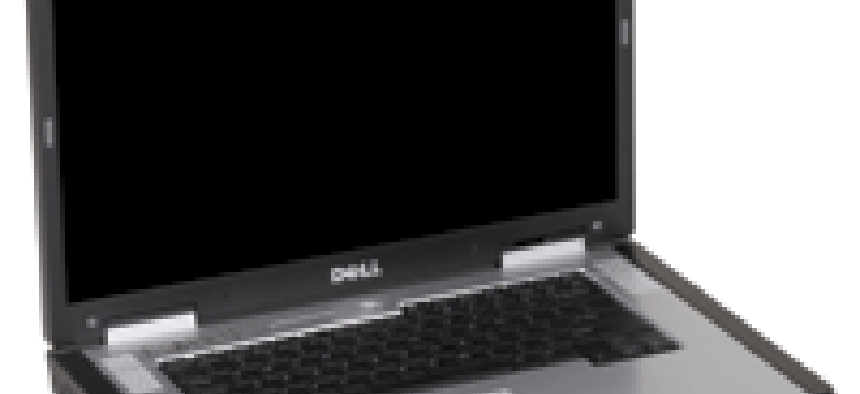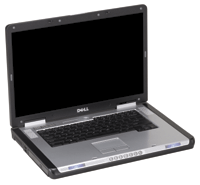When is a desktop computer not a desktop computer? When it fits into your briefcase and still has a big, bright display, roomy keyboard, CAD-crunching power and go-anywhere network connectivity. Come to think of it, today's notebook systems may actually be better than many desktops.Just about everything mobile professionals have been waiting for to make notebooks comparable to desktops has now fallen into place'from uncompromising performance to budget-friendly prices. Small displays have given way to wide-screen LCDs'up to 17 inches diagonally'that render movie-quality images. And as power notebook screens grow larger, so do their keyboards, making typing more comfortable.Wireless communications, up to 54 Mbps, are standard on most of today's notebooks. And as WiFi security improves, agencies grow more comfortable deploying wireless networks so workers can connect from anywhere in a building. But even if you're in an office with no wireless LAN, Gigabit Ethernet adapters are also now common on notebooks.Not surprisingly, hard drives for notebooks have ballooned. About a year ago, standard drives averaged about 20G; today you can have more like 60G without paying extra'yet the notebooks still cost less than older versions. And if you need more storage than your drive offers'maybe you carry around a lot of detailed designs, digital photos or full-motion video files'get a notebook with high-capacity removable media. CD-ROM drives have been replaced by capacious, rewritable optical drives. Or if you prefer, media-card readers, once options in high-end notebooks, now come standard in many systems.But perhaps most important, today's power notebooks offer desktop level performance without compromising battery life. New processors and their accompanying chip sets support the kinds of high-speed technology you'd find in desktops. And through advanced power management and optional, affordable eight- and twelve-cell batteries, notebooks usually last longer before their next recharge.So when you're shopping for a new notebook, start with these criteria:Intel's latest Centrino Mobile Technology platform, previously code-named Sonoma, is centered on a fleet of Pentium M processors designed to work with the Intel 915 chip set. Centrino represents the latest in Intel's fully featured wireless LAN capability and is designed to deliver excellent mobile performance while enabling longer battery life. Though used in some desktop replacements, it is targeted mainly at sleeker, lighter notebook designs.The Mobile Intel Pentium 4 Processor, targeted more toward higher performance desktop replacement and multimedia notebooks, runs at clock speeds between 2.8GHz and 3.6GHz and comes with a fast 533MHz front-side bus. The most advanced version to date, the Mobile Pentium 4 with Hyper-Threading Technology is built around 90-nanometer process technology with 1M of L2 cache. To confuse matters slightly, there's also a Mobile Intel Pentium 4 Processor-M, which is designed for graphics-intensive applications and comes with SpeedStep technology to help optimize application performance and power consumption.Meanwhile, Advanced Micro Devices has come out with a mobile version of its AMD Athlon 64 processor. It promises built-in support for future 64-bit applications and features PowerNow technology for ad- vanced power management and longer system battery life. All versions (3000+ to 3700+) provide 1M of L2 cache and run at speeds from 2.4GHz to 1.8GHz. AMD claims that despite apparently slower clock speeds, the mobile AMD Athlon 64 actually outperforms competing Intel processors due to its large 6.4-Gbps bandwidth.A year ago, you wouldn't buy a notebook with less than 512M of RAM. At today's low prices for memory, why not build in at least 1G of memory for those demanding multimedia applications you'll run through your power notebook? And look for double-data-rate 2 memory: It runs faster than plain DDR RAM.Fast video or graphics cards used to be the exception among notebook computers, but power notebook makers soon came to realize that if their devices were to be considered true desktop replacements, they would have to include more powerful graphics capabilities. Intel offers its own graphics chip with versions of the Centrino platform, but it can't keep pace with video accelerations from companies such as ATI Technologies and Nvidia Corp. Look for something from the ATI Mobility Radeon 9700/9800 or Mobility X600/X800 series, or the Nvidia GeForce 6800 or Go5700 series with 128M or 256M of RAM.Today, 40G and 60G hard drives come standard with most notebooks. But for just a little extra, you could double that capacity to 80G or 100G. Most of these high-end drives run at 5,400 rpm, as opposed to the 4,200-rpm drives of yesterday, and their performance benefits will make up for the extra money.CD-rewritable drives are OK, but just OK. Given DVD technology's greater storage capacity, faster speed, and backward compatibility with older CD and DVD technologies, look for a double-layer DVD+/-RW burner. If you think that's overkill, opt for a good DVD/CD-RW combo drive.Virtually every notebook listed in this guide comes standard with a 10/100/1000 Gigabit Ethernet LAN adapter, wireless 802.11g capabilities and a V.90 56K dial-up modem. Bluetooth is a nice connectivity feature, but the technology hasn't really taken off and it is doubtful that it will ever occupy more than a small niche in computer networking.Wide-screen displays are taking off, and with good reason. A wide-screen display with a 16:9 aspect ratio (the same as wide-screen TVs) allows users to feel like they are seeing more of the image than they would on a regular display. Wide-screen notebook displays are available in 15-, 16- and 17-inch sizes, with the 17-inch size being the most popular in the desktop replacement category. Wide SXGA+ screens offer resolutions of 1,680 by 1,050 pixels; wide UXGA delivers up to 1,920 by 1,200 pixels.Beyond that, think carefully about form factor. Luggable is a better word than portable to describe most power notebooks. At 14-inches wide, 11.8-inches deep and 1.8-inches thick, my Sony VAIO PCG-GRX700 notebook with a 16-inch WSXGA+ screen can hardly be considered svelte. But these days, power comes in many packages. Find the one that suits your computing needs and you may never look at your desktop PC the same way again.
Power notebooks: Notebooks today can function as fully equipped desktop systems and still move from office to hotel to home. But think luggable rather than portable.







